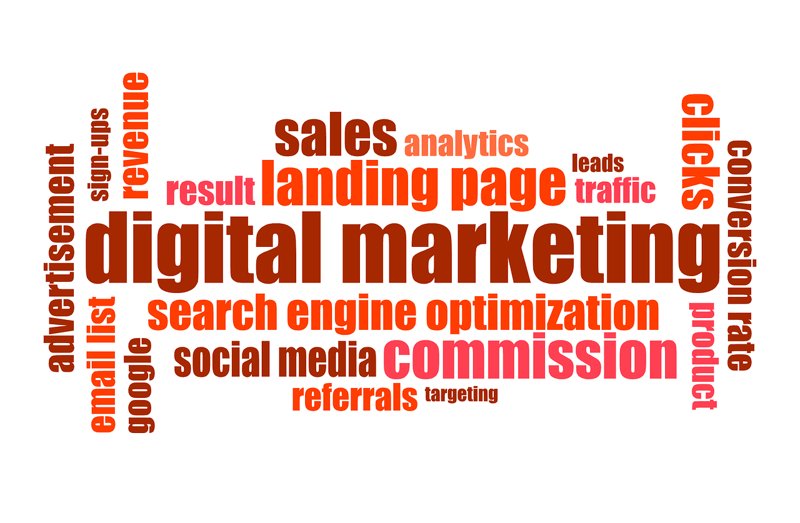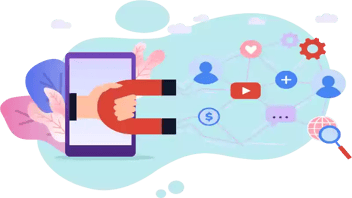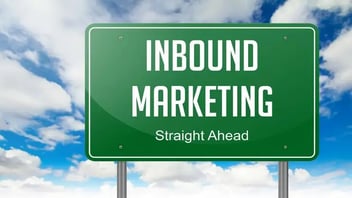Why Is an Inbound Marketing Strategy Important?
The marketing internet has been awash in articles talking about how "inbound marketing," "outbound marketing," and "content marketing" are the next BIG THING, so much so that it's getting confusing even for us. The explosion of new marketing terms, tactics, and techniques can be overwhelming — we get it. After all, many people ascribe to the idea that marketing is marketing, right?
Well, no. It's not that simple anymore. We will look at inbound marketing (but here's more about outbound marketing and content marketing if you're interested!). Here's why we're such strong proponents of inbound marketing and its use by almost any company in any industry.
Definition Time: Inbound Marketing
So, what is Inbound Marketing, and how is it different? Market leader HubSpot coined the phrase "inbound marketing" to describe the growing tactic of using content to attract, engage, and delight customers (existing and potential alike), thereby growing your business. "Inbound" was used to counter what HubSpot calls "outbound marketing," or traditional marketing, where a brand forces information and sales pitches on its audience.
Inbound marketing generates 3x more leads than outbound marketing.
Inbound marketing provides a counterpoint to that, where you work to attract customers to your brand by providing engaging, informative, and highly relevant content on your blog, social media, and other online platforms. The inbound methodology combines multiple media types across multiple channels to convey your brand message, raise awareness, and provide solutions to pain points your customers are known to have—all that while building trust in your brand as a source of great information.
As for content marketing, that's the subset of inbound that covers how to produce exceptional, relevant blog posts and social media updates.
Some examples of the tactics used in the inbound marketing customer journey (all of which are covered in the HubSpot Certified Inbound Marketer program offered via the HubSpot Academy - Marketing Skills):
Attract phase
-
Paid ads: Transitioning from the traditional marketing world, paid ads remain a crucial component of an inbound marketing campaign. What differs is the content of these ads; they're not sales pitches per se; instead, they provide information and a CTA to learn more by clicking through to a landing page full of details.
-
Videos: Testimonials show that people trust other people more than corporations, and guided how-tos can show how easy it is to use your product to solve problems.
-
SEO: Optimizing the back end of your website's pages helps bring organic traffic in from search engines and can help propel you to the top of the SERPs (search engine results pages).
-
Blogs/social media posts: These comprise the content aspect of inbound, produced to provide relevant information to your readers. This engenders trust and gratitude when they can use that information to solve existing problems, leading to their readiness to convert to paying customers when the time is right.

Engage phase
-
Email newsletters: Once readers have found your content helpful, they're often ready to hand over contact information to subscribe to your newsletter. You can use this channel to convey more brand stories, industry news, company updates, and exclusive offers.
-
Chatbots: Once readers look around your site, they will inevitably develop questions. Having a chatbot programmed to handle basic FAQ duties frees up your team member to handle more pressing matters, while also making that information available 24/7.
-
Marketing automation: As you build your contact list, automation software will enable you to keep your newsletters, blog posts, and social media updates on schedule. Many also allow you to segment lists based on several factors, helping you to tailor your content further to resonate with a broader audience.
-
Lead generation: Once readers have learned what they need to know, chatted with your bot to fill in the blanks, and received enough emails to know they can trust you, they're ready to reach out and convert—all without pushy sales calls.
Delight phase
-
Blog posts/comments: Happy customers still enjoy learning, so targeting your existing customers with some content tailored for them is critical. They are also more likely to leave insightful comments on your posts, so be sure to check in regularly and respond promptly.
-
Social media conversations: New and existing customers have questions and are increasingly asking them via social media. Ensure that someone is monitoring your accounts to respond to these inquiries promptly. A company's social media reputation can make or break it.
-
Marketing automation: All the above elements carry over to this customer journey phase.
-
Smart content: We mean intelligent, on-point, and tailored to its audience. Those segmented contact lists? Use those to send content specifically tailored to those recipients. For example, users of your widget might want to know about some advanced techniques, while potential customers are still looking for basic how-to guides to show them how you can help.
Inbound marketing leads have a 35% higher lifetime value than outbound marketing leads.
The Market has Changed. Inbound is the Response
Today's customers no longer want to be talked AT; they wish to converse. We have social media to thank for that. These channels are also where customers look for that conversation, even with companies. Traditional, or outbound, marketing involved cold calling potential customers and pushing sales information on them, rather than asking how they could be helped.
Inbound was developed to address that situation and provide people with the helpful interactions they sought. Engaging in casual conversations with your target audience gives your company's brand a human voice. Once trust is established, and someone needs a product or service, they remember those conversations and how human you made the company feel, and they'll come calling. No cold calls are necessary.
Inbound Epitomizes the Saying, "Give Your Best Stuff Away for Free."
The saying about giving your best stuff away for free is often misunderstood. It doesn't mean you should provide the same service you charge for, for free. Wouldn't you expect your mechanic to fix your car for free? By sharing the best of your niche knowledge and industry understanding through your content marketing and inbound strategy, you will foster the trust that leads to lifelong customers.
By publishing insightful, relevant, and, most importantly, helpful information, you will gain your audience's trust as you grow the organic traffic to your site. This combination of increased traffic and solidifying yourself in the minds of your target audience makes inbound such a powerful marketing tool and an essential piece of a solid marketing plan as we head deeper into the 21st century.
This content is also available in:
- German: Warum ist eine Inbound-Marketing-Strategie wichtig?
- Spanish: ¿Por qué es importante una estrategia de Inbound Marketing?
- French: Pourquoi une stratégie d'Inbound Marketing est-elle importante ?
- Italian: Perché è importante una strategia di Inbound Marketing?
- Romanian: De ce este importantă o strategie de Inbound Marketing?
- Chinese: 入站营销战略为何重要?









Leave a Comment